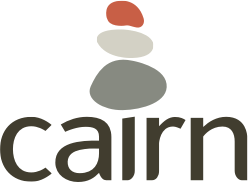I have had a folder on my computer for over ten years now that is called “Much-Used Documents.” I’m not sure that is an accurate way to use the English language, however, the folder name has stuck. In it, I have my go-to favorite resources, tools, documents, materials. It’s a quick way to access what I need when I need it. Today, I’ll list the tools that I refer to often for Health Education. Tomorrow, I’ll list those tools I use for broader school health work. My hope is that you, the reader have an opportunity to read through this list, check these things out and utilize them! Some of these documents are things I developed. So, I’ll list them and if you are interested in any of them, contact me. I’m happy to share.
You should be developing a scope and sequence or unit or lessons based on these 4 things:
- National or State level K-12 Health Education Standards
- Characteristics of Effective Health Education Curricula
- YRBS or other data sources
- Local/State Laws and Policies related to what you are required to teach
National Health Education Standards– Let’s start here. I was fortunate enough to be selected to be on the panel for revision of this second edition, 2007 document. There is discussion within the field now, that I am a part of, to create another document that may be supplemental to this one. It would include a more classroom teacher-friendly tool and include more information for the 21st Century learner/teacher, as well as have a focus on health literacy. I have mixed feelings about a new document, but understand that the second edition is not really a classroom-friendly tool. Although, if you had a strong higher ed health education experience, it should be a tool most health education specialists can use. The problem is that most teachers teaching health education aren’t health ed specialists and would love a tool that is aligned to 21st Century Skills, Common Core and has a focus on health literacy. So, I’m excited to be a part of the discussion and really appreciate being asked!
Health Education Curriculum Analysis Tool (HECAT)– This is the second place to start. The NHES focuses on the content standards, but without much mention of the health issues. The HECAT is an overwhelming tool, yes, however, it is a tool that can guide a state to develop state standards, a district to create a K-12 health education scope and sequence and individual teacher to do lesson planning. I refer to it quite often. I’m planning on doing a webinar on the tool (or a series of them) very soon. One of the most useful tools within the document is on page 4, Characteristics of an Effective Health Education Curricula.
MMWR’s School Health Guidelines to Promote Healthy Eating and Physical Activity– Here’s the Executive Summary. For full resource, go here. This tool is very public-healthy. However, Guideline 5 is, ‘Implement Health Education that Provides Students with the Knowledge, Attitudes, Skills, and Experiences Needed for Healthy Eating and Physical Activity.’ And Guideline 4 is ‘Implement a Comprehensive Physical Activity Program with Quality Physical Education as the Cornerstone.’ So, check it out. It goes over some of the best practices in health and physical education.
CDCs Youth Risk Behavior Survey– Use data to drive curricular decisions! If you are health ed specialist, you should have been taught how to do this in school. However, if not, dig into any local, state, national data you can find to actually see what risk and health behaviors your students are participating in. 2 week unit on prescription drug abuse? Why if most of your students are drinking alcohol. Know the numbers and develop a curricula based on them.
Don’t Do It! Scare Tactics Don’t Work– a resource that goes over why we shouldn’t be using scare tactics in the health education classroom.
Sex Education
Oregon Youth Sexual Health Plan– this document is a part of a larger state-wide approach to increasing the sexual health of adolescents in Oregon. However, objective #5 is on Providing Education and skill building for youth and families and includes comprehensive sex education language and goals.
Just Say Know– Texas Freedom Network. To read full report on status of sex education in Texas click here.
The 17 Characteristics of Effective HIV and Pregnancy Prevention Programs– This is a larger document developed by Doug Kirby, Lori Rolleri and Mary Martha Wilson. It is incredibly helpful, but page 9 lists these characteristics.
Age/Developmentally Appropriate, Comprehensive Sexuality Education Topic Guidelines– I supported Brad Victor on this document when I was overseeing K-12 Health Education for the Oregon Department of Education. It could be a useful advocacy tool, or help with developing a unit or lessons.
National Sexuality Education Standards– Great tool to develop your scope and sequence or units/lessons on sex education!
Positive Youth Development as a Strategy to Promote Adolescent Sexual and Reproductive Health
Grading
The Case Against Zero-Just an article I like on how grading on a curve isn’t best practice.

Leave a Reply